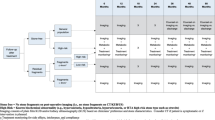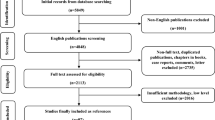Abstract
Purpose of Review
The prevalence of uric acid (UA) urolithiasis contributes significantly to global disease burden, due to high rates of recurrence and diagnostic challenges. Dissolution therapy plays a valuable role in the conservative management of UA calculi, reducing the requirement for surgical intervention. This review summarises the existing evidence for the efficacy of medical dissolution of uric acid urolithiasis.
Recent Findings
A systematic search was conducted of worldwide literature according to PRISMA methodology and Cochrane standards for systematic review. Studies were included if they reported outcome data for the administration of medical therapy for the dissolution of UA calculi. A total of 1075 patients were included in the systematic review. Complete or partial dissolution of UA calculi was observed in 80.5% of patients (865/1075 patients), with 61.7% (647/1048 patients) achieving complete dissolution and 19.8% (207/1048 patients) achieving partial dissolution. A discontinuation rate of 10.2% (110/1075 patients) was noted, and 15.7% (169/1075 patients) required surgical intervention.
Summary
Dissolution therapy is a safe and effective method of conservatively managing uric acid stones in the short term. Despite the significant disease burden of UA calculi, current guidelines are limited by deficiencies in the existing body of research. Further research should be undertaken to develop evidence-based clinical guidelines for diagnosis, treatment, and prevention of UA urolithiasis.

Similar content being viewed by others
References
Papers of particular interest, published recently, have been highlighted as: • Of importance •• Of major importance
Manish K, Stephen LW. Uric acid nephrolithiasis [Internet]. StatPearls - NCBI Bookshelf. 2022 [cited 2022 Dec 21]. Available from: https://www.ncbi.nlm.nih.gov/books/NBK560726/.
Mandel NS, Mandel GS. Urinary tract stone disease in the United States veteran population. II. Geographical analysis of variations in composition. J Urol [Internet]. 1989 [cited 2022 Dec 21];142(6):1516–21. Available from: https://pubmed.ncbi.nlm.nih.gov/2585627/.
Petritsch PH. Uric acid calculi. Results of conservative treatment. Urology. 1977;10(6):536–8.
Gonzalez RD, Whiting BM, Canales BK. The history of kidney stone dissolution therapy: 50 years of optimism and frustration with Renacidin. J Endourol. 2012;26(2):110–18.
European Association of Urology. Urolithiasis - metabolic evaluation and recurrence prevention - Uroweb [Internet]. 2022 [cited 2022 Dec 10]. Available from: https://uroweb.org/guidelines/urolithiasis/chapter/metabolic-evaluation-and-recurrence-prevention.
Elbaset MA, Hashem A, Eraky A, Badawy MA, El-Assmy A, Sheir KZ, et al. Optimal non-invasive treatment of 1–2.5 cm radiolucent renal stones: oral dissolution therapy, shock wave lithotripsy or combined treatment—a randomized controlled trial. World J Urol [Internet]. 2020;38(1):207–12. Available from: https://doi.org/10.1007/s00345-019-02746-2.
Gridley CM, Sourial MW, Lehman A, Knudsen BE. Medical dissolution therapy for the treatment of uric acid nephrolithiasis. World J Urol [Internet]. 2019 Nov 1 [cited 2022 Nov 13];37(11):2509–15. Available from: https://pubmed.ncbi.nlm.nih.gov/30810833/.
• Yunhua M, Hao Z, Ke L, Wentao H, Xiaokang L, Jie S. Febuxostat promoted dissolution of radiolucent nephrolithiasis in patients with hyperuricemia. Urol J. 2021;18(1):34–9. This paper reviewed the role of febuxostat as an alternative to allopurinol as an adjuvant therapy for the prevention of uric acid urolithiasis.
•• Elsawy AA, Elshal AM, El-Nahas AR, Elbaset MA, Farag H, Shokeir AA. Re: Can we predict the outcome of oral dissolution therapy for radiolucent renal calculi? A prospective study. J Urol. 2019;202(4):825–6. Identified that oral dissolution therapy achieved 83% complete clearance of uric acid urolithiasis, with a low discontinuation rate.
•• Tsaturyan A, Bokova E, Bosshard P, Bonny O, Fuster DG, Roth B. Oral chemolysis is an effective, non-invasive therapy for urinary stones suspected of uric acid content. Urolithiasis [Internet]. 2020 Dec 1 [cited 2022 Nov 16];48(6):501–7. Available from: https://pubmed.ncbi.nlm.nih.gov/32770255/. Identified 61% complete dissolution of uric acid urolithiasis with oral dissolution therapy and a low discontinuation rate.
• Moore J, Nevo A, Salih S, Abdul-Muhsin H, Keddis M, Stern K, et al. Outcomes and rates of dissolution therapy for uric acid stones. J Nephrol [Internet]. 2022;35(2):665–9. Available from: https://doi.org/10.1007/s40620-021-01094-y. Reported that 41% patients achieved complete or partial dissolution.
Kursh ED, Resnick MI. Dissolution of uric acid calculi with systemic alkalization. J Urol [Internet]. 1984 [cited 2022 Nov 15];132(2):286–7. Available from: https://pubmed.ncbi.nlm.nih.gov/6330382/.
Moran ME, Abrahams HM, Burday DE, Greene TD. Utility of oral dissolution therapy in the management of referred patients with secondarily treated uric acid stones. Urology. 2002;59(2):206–10.
• Elderwy AA, Kurkar A, Hussein A, Abozeid H, Hammodda HM, Ibraheim AF. Dissolution therapy versus shock wave lithotripsy for radiolucent renal stones in children: a prospective study. J Urol [Internet]. 2014 [cited 2022 Nov 15];191(5 Suppl):1491–5. Available from: https://pubmed.ncbi.nlm.nih.gov/24679880/. Reported a 72.9% rate of complete dissolution of urolithiasis with oral dissolution therapy in a paediatric population.
Salem S, Sultan M, Badawy A. Oral dissolution therapy for renal radiolucent stones, outcome, and factors affecting response: a prospective study. Urol Ann [Internet]. 2019 Oct 1 [cited 2022 Nov 15];11(4):369–73. Available from: https://pubmed.ncbi.nlm.nih.gov/31649455/.
Sharma SK, Indudhara R. Chemodissolution of urinary uric acid stones by alkali therapy. Urol Int [Internet]. 1992 [cited 2022 Nov 16];48(1):81–6. Available from: https://www.karger.com/Article/FullText/282302.
Alsinnawi M, Maan Z, Rix GH. Oral dissolution therapy for radiolucent kidney stones. An old treatment revisited. J Clin Urol. 2016;9(4):268–73.
Sinha M, Prabhu K, Venkatesh P, Krishnamoorthy V. Results of urinary dissolution therapy for radiolucent calculi. Int Braz J Urol [Internet]. 2013 Jan [cited 2022 Nov 16];39(1):103–7. Available from: https://pubmed.ncbi.nlm.nih.gov/23489502/.
Tzelves L, Mourmouris P, Skolarikos A. Outcomes of dissolution therapy and monitoring for stone disease: should we do better? Curr Opin Urol [Internet]. 2021 Mar 1 [cited 2022 Dec 10];31(2):102–8. Available from: https://pubmed.ncbi.nlm.nih.gov/33332876/.
Spettel S, Shah P, Sekhar K, Herr A, White MD. Using Hounsfield unit measurement and urine parameters to predict uric acid stones. Urology. 2013;82(1):22–6.
Mokhless IA, Sakr MA, Abdeldaeim HM, Hashad MM. Radiolucent renal stones in children: combined use of shock wave lithotripsy and dissolution therapy. Urology [Internet]. 2009 Apr 1 [cited 2022 Nov 13];73(4):772–5. Available from: http://www.goldjournal.net/article/S0090429508019353/fulltext.
Somani BK, Desai M, Traxer O, et al. Stone-free rate (SFR): a new proposal for defining levels of SFR. Urolithiasis. 2014;42(2):95.
New F, Somani BK. A complete world literature review of quality of life in patients with kidney stone disease (KSD). Curr Urol Rep. 2016;17(12):1–6.
Author information
Authors and Affiliations
Contributions
AO and GB: data collection and writing. TT, ZH, and JP: editing. BKS: conceptualisation and editing.
Corresponding author
Ethics declarations
Conflict of Interest
The authors wish to highlight that Professor Bhaskar Somani is an endourology section editor for Current Urology Reports. All other authors declare no competing interests. All authors have reviewed and approved the submitted manuscript. We confirm that this work has not been published or submitted for publication elsewhere. All reported studies/experiments with human or animal subjects performed by the authors have been previously published and complied with all applicable ethical standards (including the Helsinki declaration and its amendments, institutional/national research committee standards, and international/national/institutional guidelines). All tables and figures are original.
Human and Animal Rights and Informed Consent
This article does not contain any studies with human or animal subjects performed by any of the authors.
Additional information
Publisher's Note
Springer Nature remains neutral with regard to jurisdictional claims in published maps and institutional affiliations.
Rights and permissions
Springer Nature or its licensor (e.g. a society or other partner) holds exclusive rights to this article under a publishing agreement with the author(s) or other rightsholder(s); author self-archiving of the accepted manuscript version of this article is solely governed by the terms of such publishing agreement and applicable law.
About this article
Cite this article
Ong, A., Brown, G., Tokas, T. et al. Selection and Outcomes for Dissolution Therapy in Uric Acid Stones: A Systematic Review of Literature. Curr Urol Rep 24, 355–363 (2023). https://doi.org/10.1007/s11934-023-01164-7
Accepted:
Published:
Issue Date:
DOI: https://doi.org/10.1007/s11934-023-01164-7




